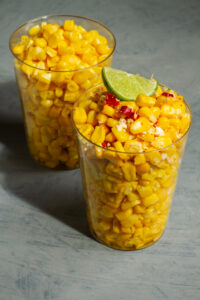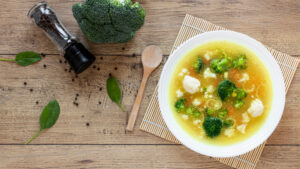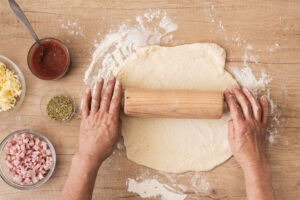Introduction
Easy pasta dough recipe: Homemade pasta brings a unique charm to the dining table that store bought varieties simply can’t match. There’s a satisfaction in knowing every ingredient and crafting something from scratch. However, many shy away from attempting it, believing the process to be too intricate. That’s where this easy pasta dough recipe comes in. It simplifies the process without compromising on taste or texture, ensuring that even those new to pasta making can achieve perfect results. By following this guide, you’ll master a foolproof method, making it the only recipe you’ll ever need for fresh, delicious pasta.
The Basics of Pasta Dough
Understanding the basics is key to mastering any recipe, and this easy pasta dough recipe is no exception. The foundation starts with simple ingredients: flour, eggs, salt, and optionally, olive oil. Each component plays a critical role.
Flour is the backbone. You can use all purpose flour for its versatility, semolina for a slightly rougher texture that clings to sauces, or 00 flour for a silky, smooth finish that’s prized in Italian cuisine.
Eggs provide moisture and richness, binding the dough together.
A pinch of salt enhances the flavor, ensuring your pasta is perfectly seasoned.
Lastly, a splash of olive oil can add a subtle richness and make the dough easier to handle.
Step by Step Recipe
Gathering Ingredients and Tools
You’ll need some basic kitchen utensils and a few simple ingredients to get started with this easy pasta dough recipe. What you’ll need is as follows:
Ingredients:
Two cups of allpurpose flour (or semolina combined with allpurpose flour)
3 large eggs
A pinch of salt
1 tablespoon of olive oil (optional)
Tools:
Mixing bowl
Fork
Rolling pin
Pasta machine (optional, but helpful for even thickness)
Mixing the Dough
1. Creating a Well in the Flour: On a clean work surface, mound the flour and create a well in the center.
2. Adding Eggs: Crack the eggs into the well and add a pinch of salt. If using olive oil, add it now.
3. Mixing the Ingredients: Lightly whisk the eggs with a fork, then gradually stir in the flour from the well’s edges. Mixing should be done until a shaggy dough starts to form.
Assist in Reaching the Correct Consistency: Add a few drops of water if the dough appears overly dry. To make it less sticky, stir in a small amount extra flour.
Kneading the Dough
Kneading is crucial for developing gluten, which gives the pasta its structure and chewiness.
1. How to Knead: Start by pressing the dough with the heel of your hand, folding it over, and turning it. Repeat this process for about 10 minutes.
2. Techniques and Tips: Keep the work surface lightly floured to prevent sticking. The dough should become smooth and elastic.
3. Time Required and Signs of Readiness: Proper kneading takes around 10 minutes. The dough is ready when it springs back when poked and feels smooth and slightly tacky.
Resting the Dough
It’s important to let the dough rest so that the gluten may relax and make the dough easier to roll out.
1. Why Resting is Crucial: Resting ensures the dough is pliable and easier to work with, preventing it from shrinking back when rolled.
2. Suggested Resting Period and Conditions: Cover the dough with a moist cloth or wrap it in plastic wrap. Give it at least half an hour to rest at room temperature.
Rolling and Shaping the Dough
Once your dough has rested, it’s time to roll and shape it. This step is crucial in the easy pasta dough recipe for achieving the perfect texture and thickness.
Manual Rolling vs. Using a Pasta Machine:
Manual Rolling: To make the dough simpler to handle, divide it into smaller sections with a rolling pin. Roll out each portion as thinly and evenly as you can on a lightly floured surface. Although it takes more work, this approach offers you excellent control over the thickness.
Using a Pasta Machine: This procedure is made easier if you own a pasta machine. Flatten a portion of dough and feed it through the machine on the widest setting. Gradually reduce the setting to roll the dough thinner, until you reach the desired thickness.
Techniques for Rolling the Dough to the Desired Thickness:
Start with a wellfloured surface to prevent sticking.
Roll from the center outward to ensure even thickness.
If using a machine, fold the dough and pass it through the widest setting a few times to develop smoothness before reducing thickness.
Different Shapes You Can Make:
Fettuccine: Roll the dough into thin sheets and cut into narrow strips.
Tagliatelle: Similar to fettuccine but slightly wider.
Lasagna Sheets: Roll out thin sheets, then cut to fit your baking dish.
Tips for Cutting and Handling the Dough:
For neat edges, use a pasta cutter or a sharp knife.
Dust the cut pasta lightly with flour to prevent sticking.
If not cooking immediately, form small nests with the pasta strands and let them dry slightly.
Cooking Fresh Pasta
Cooking fresh pasta is quick and straightforward, making this easy pasta dough recipe a goto for homemade meals.
Cooking Times for Fresh Pasta:
Fresh pasta typically cooks in two to three minutes, much faster than dried spaghetti. Watch it closely to prevent overcooking.
Tips for Boiling Pasta:
Salted Water: Always use a large pot of well salted water. The salt enhances the pasta’s flavor.
Stirring: Stir the pasta occasionally to prevent it from sticking together.
Testing for Doneness: Test the pasta by tasting it after about 2 minutes. It should be al dente – firm but cooked through.
Storing Fresh Pasta:
If you’re not cooking the pasta immediately, lightly dust it with flour to prevent sticking, form small nests, and let it dry slightly on a floured surface.It can also be kept in the refrigerator for up to two days in an airtight container or frozen for longer periods of time.
Tips and Tricks
Mastering this easy pasta dough recipe is simple with a few key tips and tricks.
Common Mistakes to Avoid:
Overworking the Dough: Knead until smooth; however, avoid overworking the dough as this may result in a rough texture.
Not Resting the Dough: Skipping the resting period makes rolling the dough difficult.
How to Fix Sticky or Dry Dough:
Sticky Dough: Dust with a little more flour and knead until the dough is smooth and no longer sticky.
Dry Dough: Sprinkle a few drops of water and knead until the moisture is incorporated.
Variations:
Adding Herbs or Spices: Enhance your pasta by mixing fresh herbs like basil or spinach into the dough. For added flavour, you can also add spices like chilli flakes or garlic powder.
Flavored Pasta: For a unique twist, incorporate ingredients like tomato paste or squid ink for color and taste variations.
Serving Suggestions
With your fresh pasta made from this easy pasta dough recipe, the possibilities are endless.
Simple Sauces:
Marinara: A classic tomato sauce with garlic and basil.
Alfredo: A thick, buttery sauce containing Parmesan cheese and heavy cream.
Aglio e Olio: A simple blend of garlic, olive oil, and red pepper flakes.
Ideas for Complete Pasta Dishes:
Carbonara: Combine pasta with eggs, Parmesan, pancetta, and black pepper for a rich, savory dish.
Pesto Pasta: Toss your pasta with fresh basil pesto and cherry tomatoes.
Seafood Pasta: Mix with shrimp, clams, or mussels in a garlic and white wine sauce.
Tips for Plating and Presentation:
Garnish: Add a sprinkle of fresh herbs or grated cheese on top.
Plating: Use a large, shallow bowl to showcase the pasta. Twirl the pasta into neat nests for an elegant look.
Color Contrast: Add colorful vegetables or a side salad to enhance visual appeal.
Conclusion
This easy pasta dough recipe proves that making fresh pasta at home can be simple and rewarding. Because of its adaptability, you can make a variety of pasta flavours and shapes. Don’t hesitate to experiment with different ingredients and techniques to make pasta making a regular part of your kitchen routine. Try this recipe today and share your experience – we’re sure you’ll be delighted with the results.



